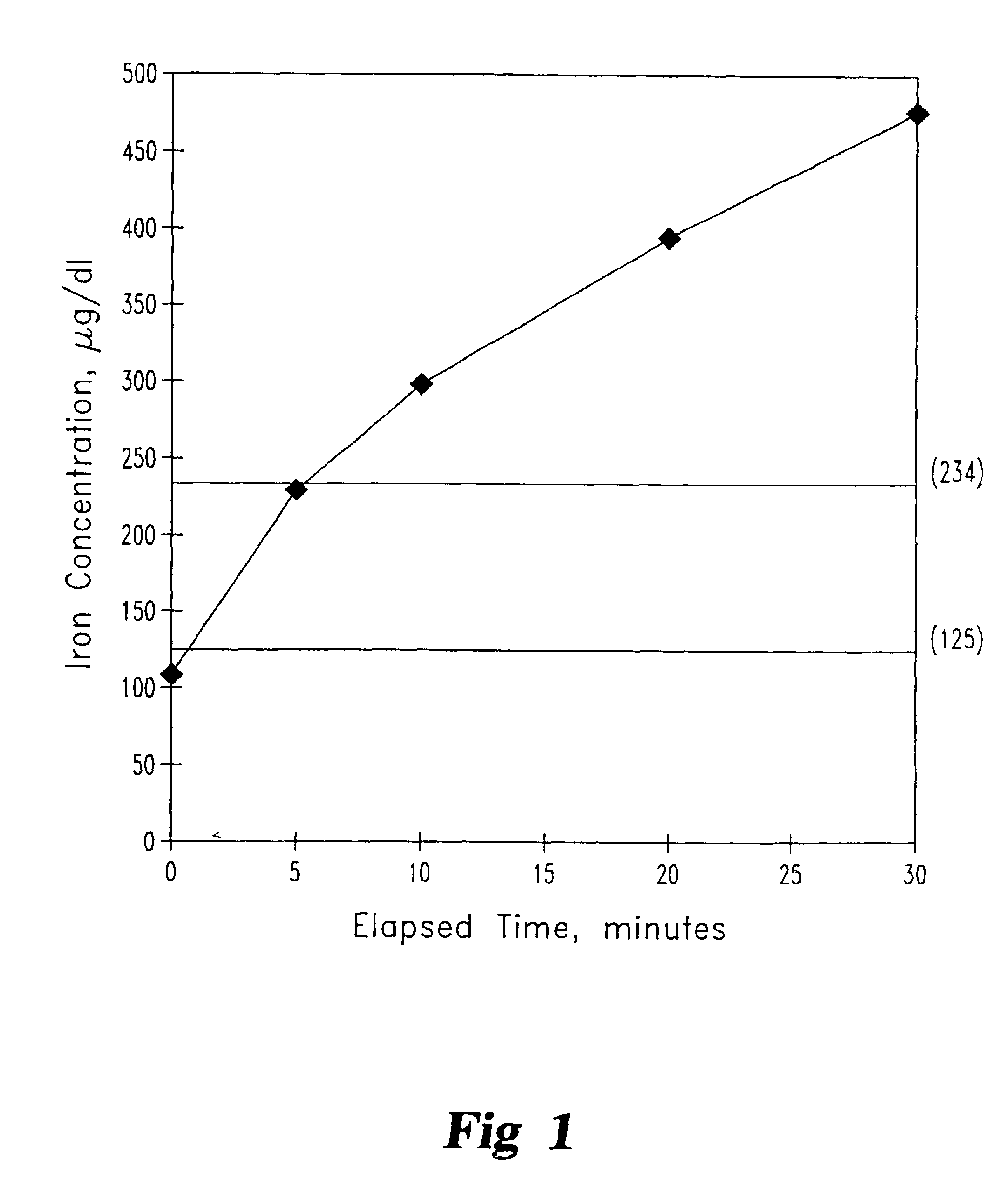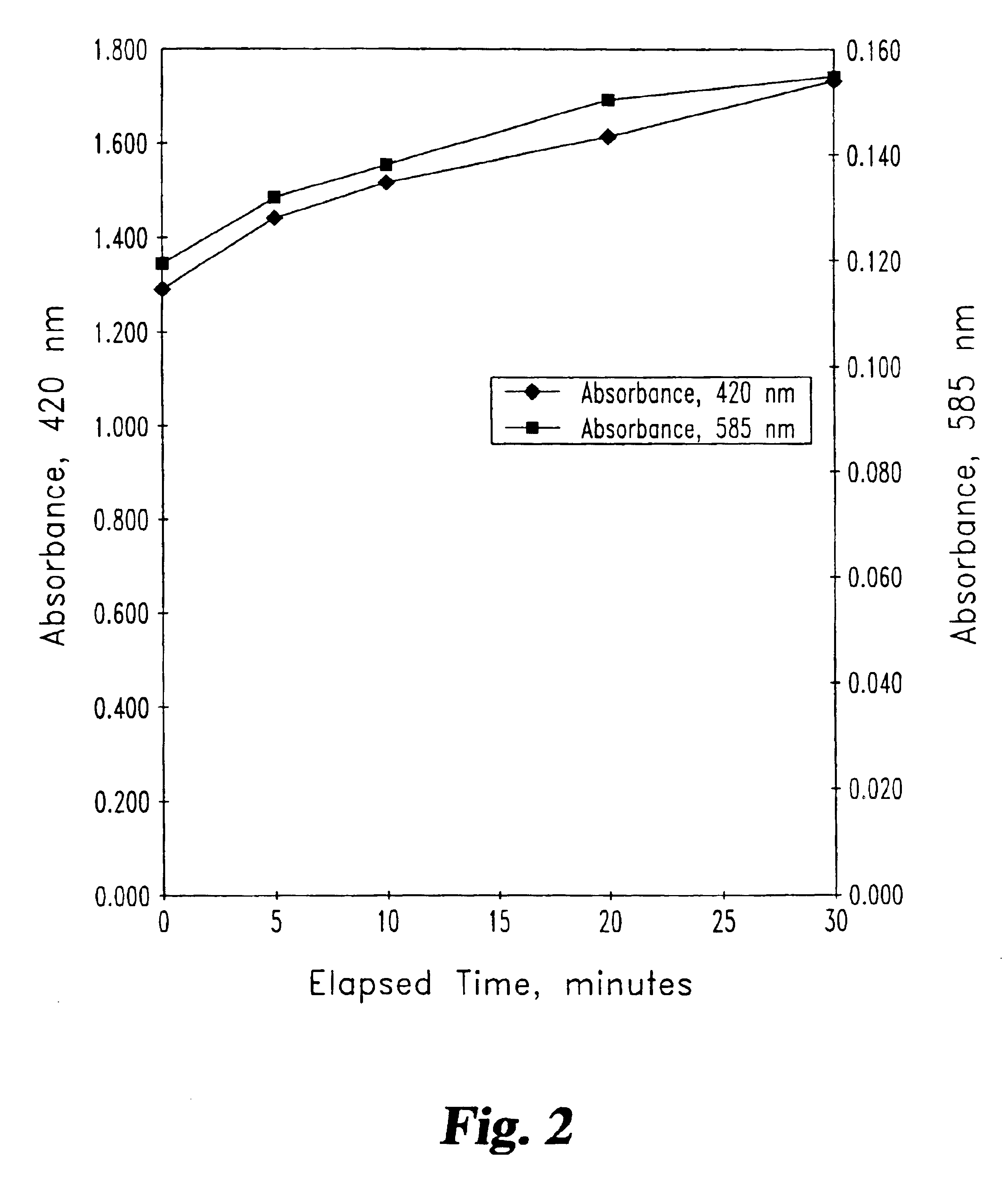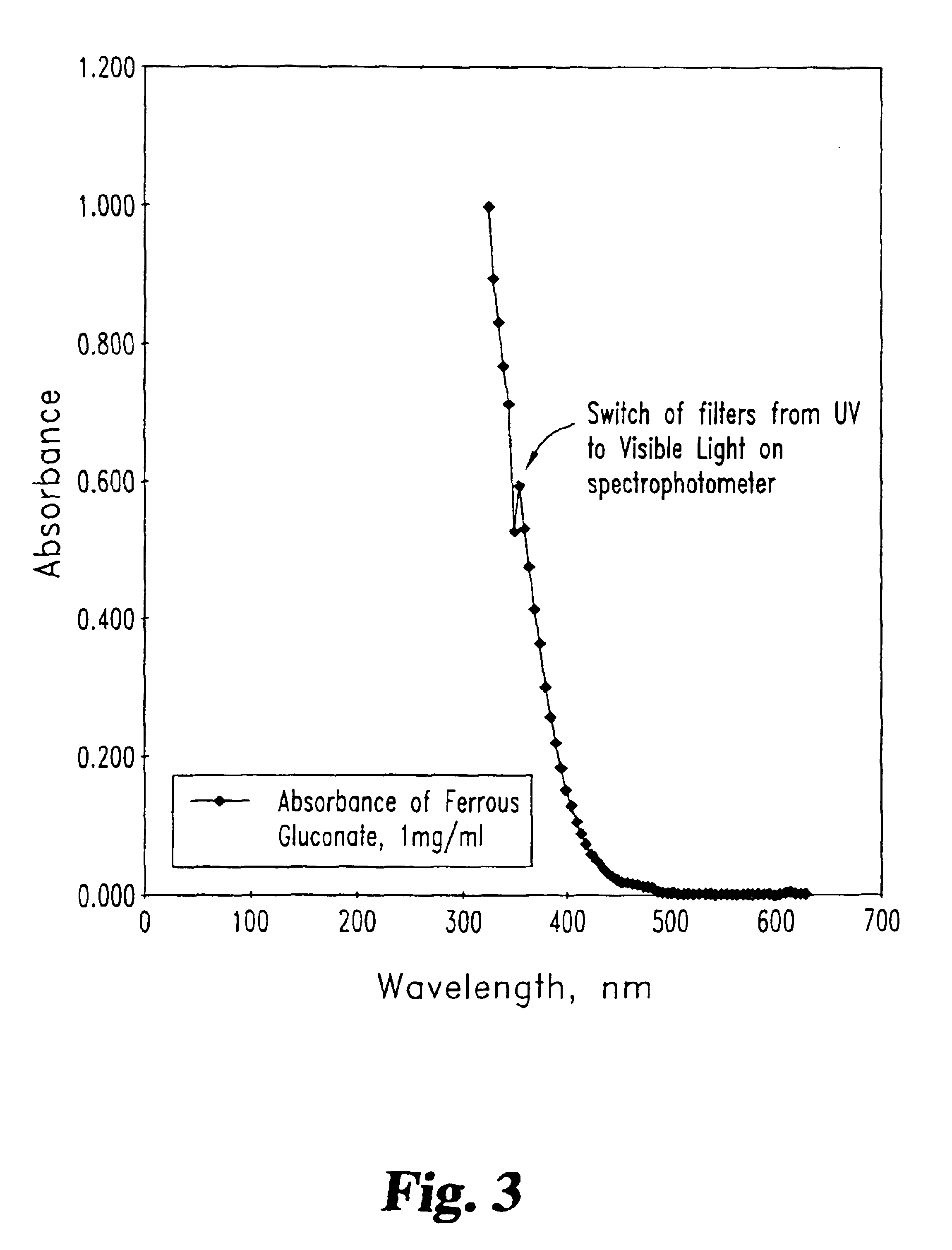Method for iron delivery to a patient by transfer from dialysate
a dialysate and patient technology, applied in the direction of drug compositions, separation processes, biocides, etc., can solve the problems of patients invariably becoming anemic, the supply of iron to the body can easily become critical, and the level of absorption of iron from food is generally low, so as to prevent the dissociation of iron ions
- Summary
- Abstract
- Description
- Claims
- Application Information
AI Technical Summary
Benefits of technology
Problems solved by technology
Method used
Image
Examples
example one
Transfer of Ferrous Gluconate into Blood
A two liter volume of bovine blood (hematocrit adjusted from 49 to 40 with saline) which had been stored with heparin anticoagulation for 24 hours was dialyzed using a PAN membrane dialyzer. The volume was maintained at 2 liters throughout the experiment by adding saline. The dialyzer type was FILTRAL 12 and the PAN membranes used had an intrinsic negative charge and, therefore, tended to bind positively charged molecules. The dialysate was created from 20 liters of purified (deionized) water with acetate concentrate (Dial Medical Supply Concentrate Solution for Acetate Dialysate) in a 1:34 dilution with water and 10 mg / L ferrous gluconate (1 mg / dl containing 125 μg / dl iron).
A sample of the blood was taken prior to dialysis of the blood and tested for iron content. The iron content of the pre-dialysis blood was 110 μg / dl and the transferrin iron binding capacity was 234 μg / dl. Dialysis was then started using the following equipment and conditi...
example two
Monitoring of Hemolysis in Experimental Dialysis
To determine whether the method of Example 1 would cause hemolysis (lysis of red blood cells with the liberation of hemoglobin), absorbance data at 420 and 585 nm was collected for the plasma at various stages of the experiment described in Example 1. These data are provided in FIG. 2. The increase in absorbance indicates that some degree of hemolysis occurred during the experiment; however, this level is not higher than that of similar experiments conducted without iron in the dialysate.
example three
Effect on Blood-leak Detection Systems
To determine whether the presence of ferrous gluconate in the dialysate would interfere with blood-leak detection systems used in hemodialysis procedures, optical absorbance data for ferrous gluconate at high concentrations were obtained. These data are provided in FIG. 3. From the plot of FIG. 3, it is apparent that iron can be added to the dialysate without interfering with the detection of hemoglobin in dialysate by blood-leak detectors using optical absorbance at either 420 nm or 585 nm.
PUM
| Property | Measurement | Unit |
|---|---|---|
| concentration | aaaaa | aaaaa |
| concentration | aaaaa | aaaaa |
| concentration | aaaaa | aaaaa |
Abstract
Description
Claims
Application Information
 Login to View More
Login to View More - R&D
- Intellectual Property
- Life Sciences
- Materials
- Tech Scout
- Unparalleled Data Quality
- Higher Quality Content
- 60% Fewer Hallucinations
Browse by: Latest US Patents, China's latest patents, Technical Efficacy Thesaurus, Application Domain, Technology Topic, Popular Technical Reports.
© 2025 PatSnap. All rights reserved.Legal|Privacy policy|Modern Slavery Act Transparency Statement|Sitemap|About US| Contact US: help@patsnap.com



